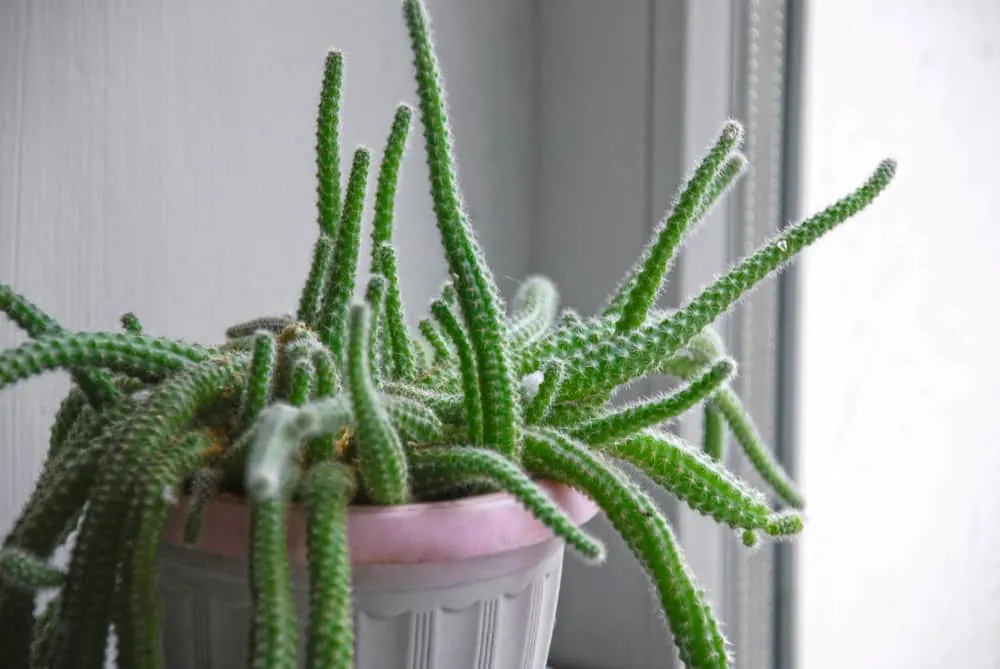
Are you looking to step up your indoor gardening game and go beyond the lovely – but commonplace – pothos and spider plants?
For a truly extraordinary plant array, check out these beautiful and unusual cultivars that emphasize strange shapes, bold colors, and inspiring blooms.
For plant collectors that seem to have everything, these oddballs would also make the perfect gift.
1. Pitcher Plant (Nepenthes × ventrata)
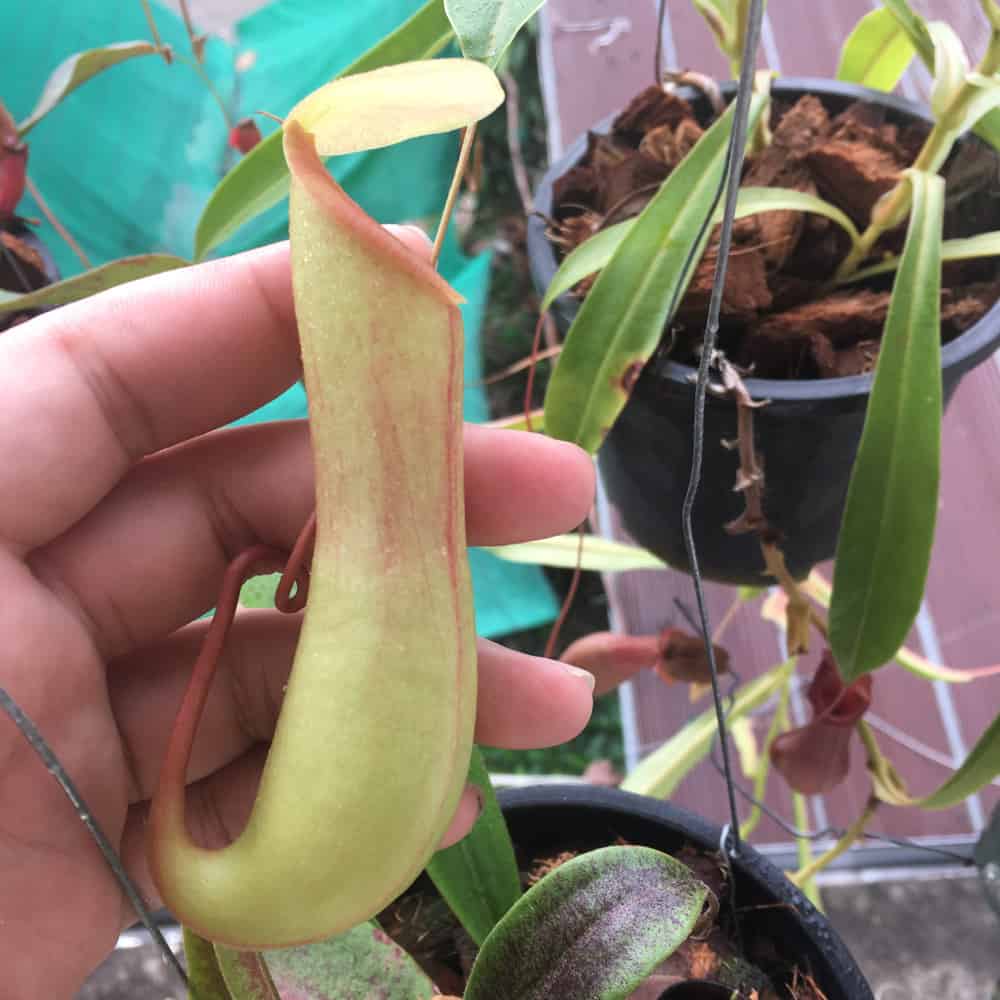
A carnivorous plant native to the Philippines, pitcher plant consumes flying and crawling insects with its oblong pitfall traps that dangle from tendrils attached to its simple green leaves.
Pitcher plant attracts creepy crawlies through nectar secreted on the underside of the trap’s lid.
Insects slip into the pitcher and drown in the liquid contained within.
Eventually bugs are digested by enzymes, which supply valuable nutrients to the plant.
Providing plenty of sunlight, warmth, and humidity will keep pitcher plant quite happy. Because pitcher plant is adapted to catch its own nutrients, use a light soil consisting of half sphagnum moss and half perlite.
Keep the soil consistently moist.
During summer or when kept outdoors, pitcher plant has no problem feeding itself.
When kept indoors over winter, feed it each month with live crickets, dried blood worms, or fish food flakes until springtime.
Buy Pitcher Plant here.
2. Goldfish Plant (Columnea gloriosa)
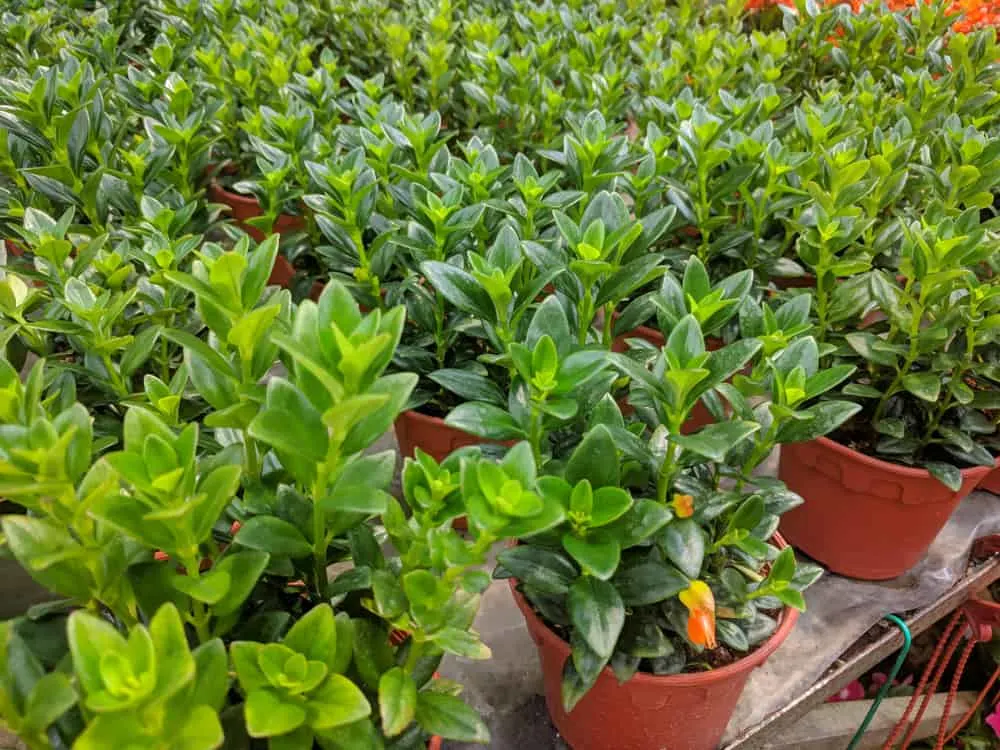
With trailing, glossy, deep green vines amid a plethora of orange blooms that resemble little goldfish, this unique cultivar will produce these flowers year-round when given the right conditions.
As a native to South and Central America, goldfish plant loves bright, indirect light and lots of humidity.
Since they are epiphytes, goldfish plants grow best in coarse and airy soil, such as coarse sphagnum moss.
Keep it well watered in summer but allow the soil to get slightly dry between waterings over winter to encourage profuse blooming.
Buy Goldfish Plant here.
3. Lavender Scallops (Kalanchoe fedtschenkoi compacta)
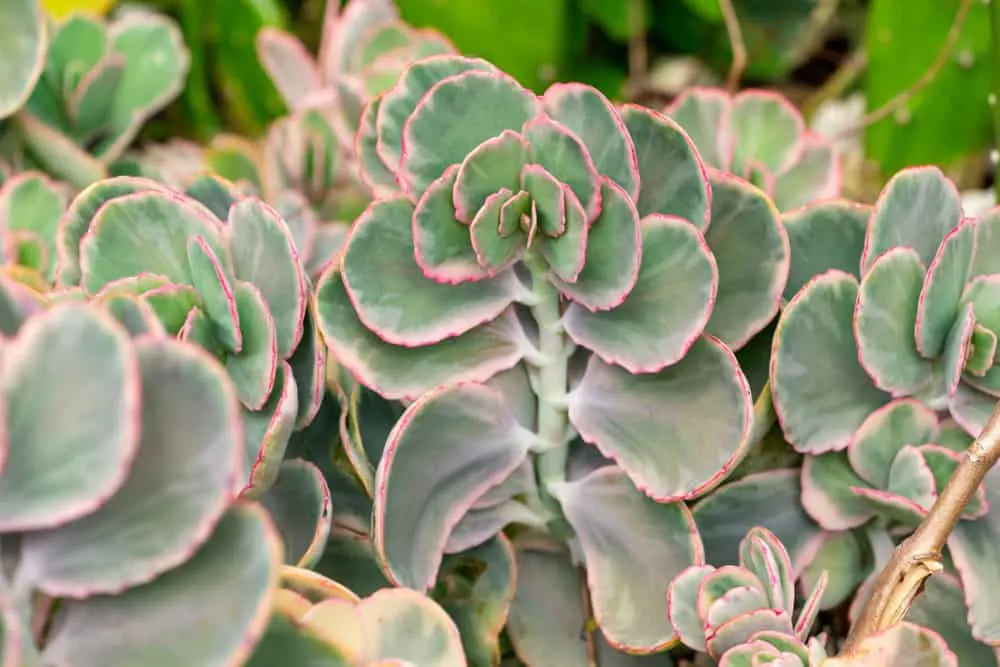
Also known as Bryophyllum fedteschenkoi, lavender scallops is a rare beauty with upright, fleshy, cream and green leaves that have a scalloped edge that turns pinkish red under bright light.
Since it is a succulent hailing from Madagascar, lavender scallops absolutely thrive in ample amounts of sunlight and little water.
Even black thumbs should find this plant very easy to care for!
Buy Lavender Scallops here.
4. Desert Rose (Adenium obesum)
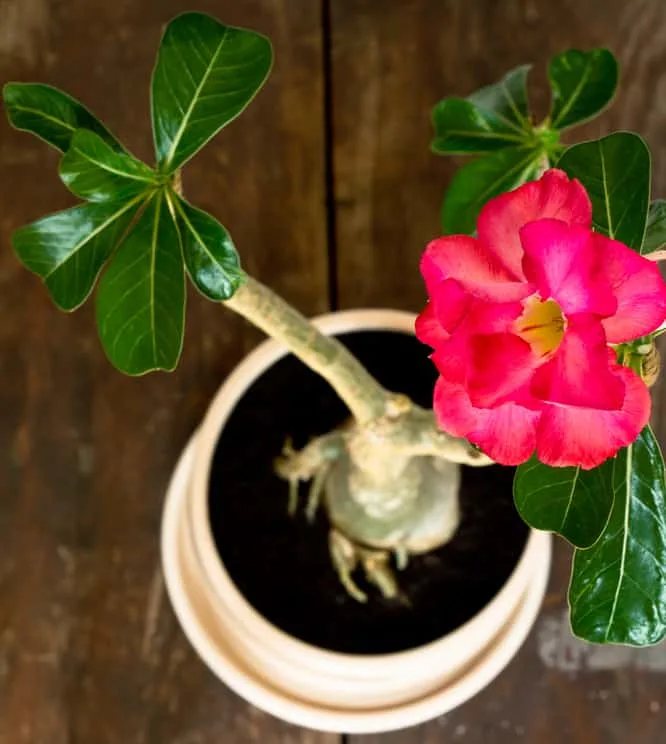
An evergreen succulent shrub from Africa, desert rose is a looker indeed.
With a swollen trunk, woody branches, leathery green leaves, and tubular flowers that range in color from red to pink, desert rose can be pruned, bonsai style, into a miniature tree or allowed to grow au natural to a height of up nearly 10 feet tall.
Despite its complex appearance, desert rose is really easy to care for. It needs very little water to thrive since it hails from semi-arid climates.
It does require plenty of sun and warmth though, and will drop its leaves if temperatures dip below 50°F.
Potted up indoors near a south facing window should certainly keep desert rose blooming and happy.
Buy Desert Rose here.
5. Madagascar Palm (Pachypodium lamerei)
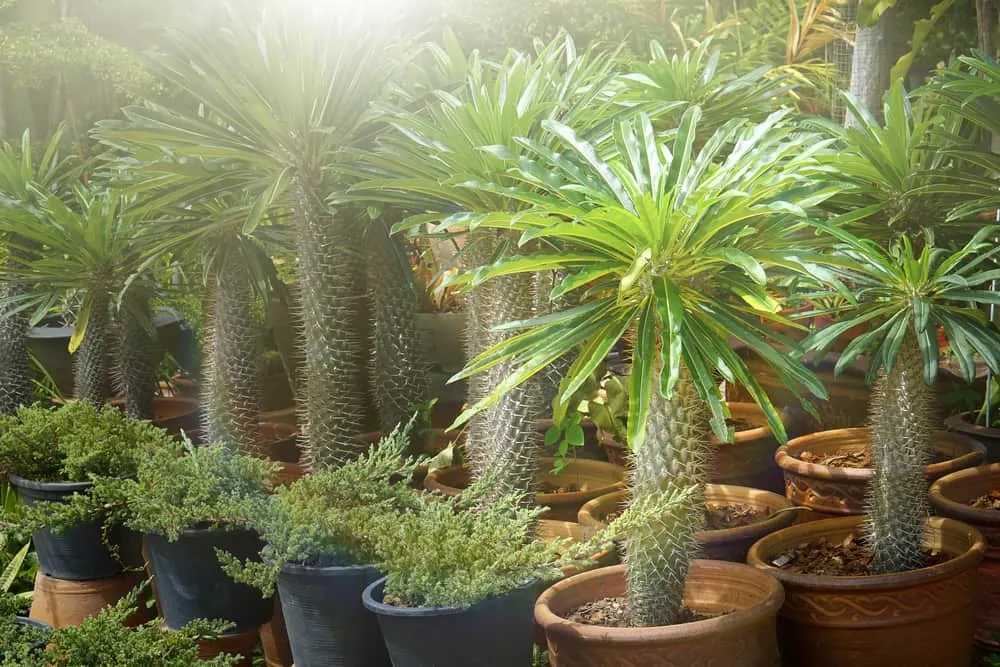
Although it looks like a cross between a palm tree and a cactus, Madagascar palm is actually a succulent from the dogbane family.
Madagascar palm – with is silvery, prickly trunk and a crown clustered with green leaves – can grow 20 feet tall in the wild but can be dwarfed to a size of less than 6 feet when potted indoors.
It’s a slow grower too, so you will have many years watching it mature.
Place Madagascar palm in a sunny location and water sparingly, just as you would other succulents. Use a good draining soil, such as cactus soil, and fertilize with a low-nitrogen formula every 5 weeks in spring and summer.
Buy Madagascar Palm here.
6. Echinopsis (Echinopsis calochlora)
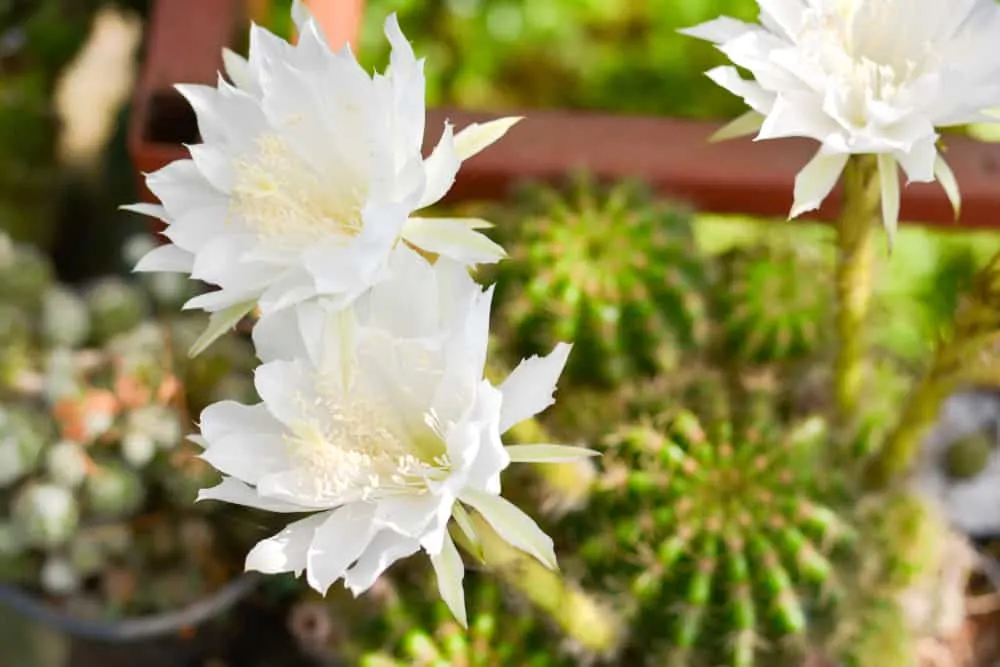
For a cactus proper, echinopsis certainly deviates from the typical cactus forms.
While it starts off as a small sea urchin like mound, about 4 inches in diameter with numerous thorny ribs, it blooms with huge 6 inch white flowers only at night.
Found growing along rocky soils in South America, echinopsis needs a light loamy soil topped with pebbles or crushed seashells.
Like other cacti, give this one lots of sunlight and little water, especially in the winter months.
Echinopsis is easily propagated as well – simple repot the little pups that appear at the base of the plant.
Buy Echinopsis here.
7. Corkscrew Albuca (Albuca spiralis)
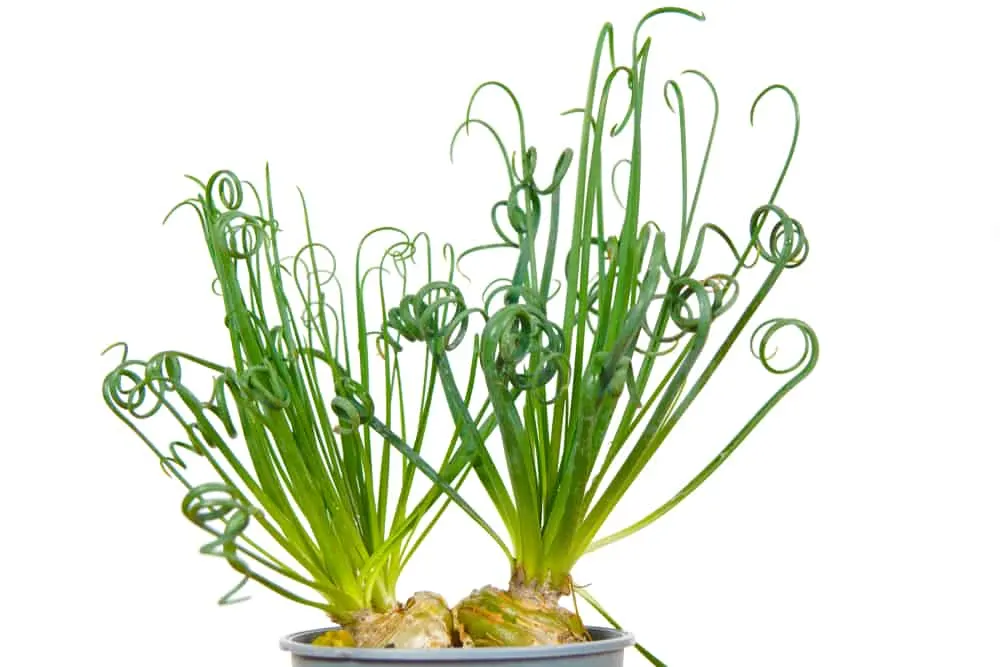
Guaranteed to add much visual interest to your indoor garden, corkscrew albuca – also known as frizzle sizzle – produces distinctive shoots that curl up tightly into spirals at each end.
The long and slender leaves emerge from an underground bulb, and during bloom time it will produce a vanilla scented central flower, yellow in color.
To keep curls nice and tight, give corkscrew albuca plenty of light. It also needs well draining soil and a careful eye on moisture.
Too much watering can lead to bulb and root rot so water less when the plant is dormant.
Buy Corkscrew Albuca here.
8. Purple Shamrock (Oxalis triangularis)
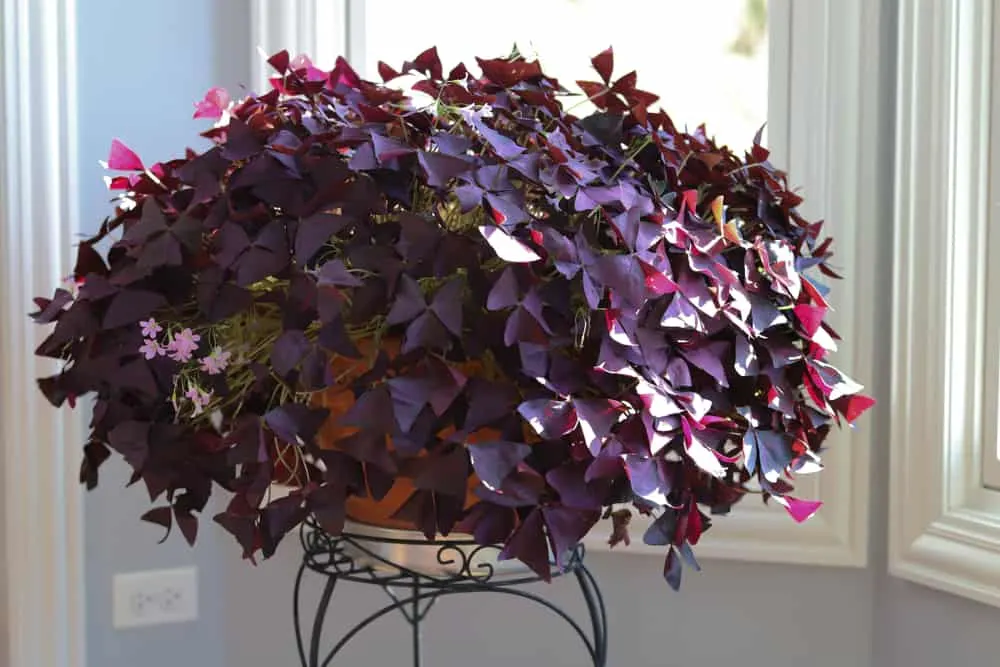
For a burst of color year round, purple shamrock bears stunning reverse triangular leaflets in sets of three that range from deep purple to magenta.
The stems emerge from underground tubers that look a little like pine cones.
Purple shamrock is not a true shamrock, but is part of the wood sorrel family. Each day, it will move and turn towards the light in the morning and afternoon, then close up its leaves at nightfall.
Although purple shamrock is a fairly easy going plant, it prefers bright, mostly indirect light and a cooler spot within the home. If temperatures are consistently above 80°F, it can become somewhat ragged in appearance.
It’s a fast grower though, so trim back any sad looking foliage and it will bounce back in no time.
Buy Purple Shamrock here.
9. String of Dolphins (Senecio peregrinus)
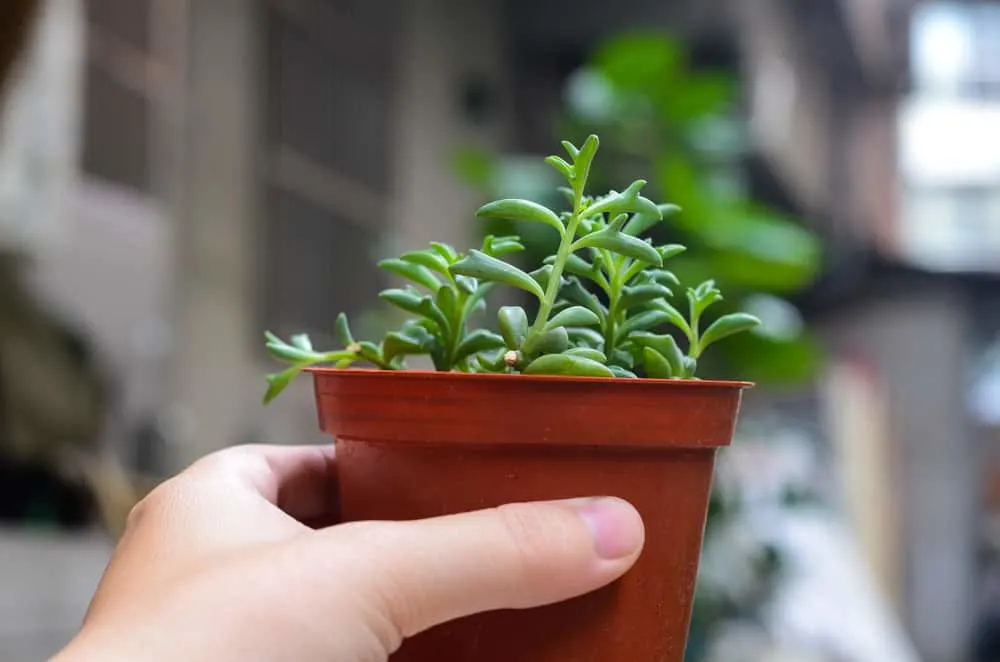
Perhaps you’ve heard of string of pearls or beads? From the same plant family comes string of dolphins, a succulent that really does look like dolphins leaping along the trailing stems.
A hybrid derived from crossing string of pearls with candle plant, string of dolphins produces curved leaves that have two small points in the midsection that resemble fins.
Perfect in a hanging basket, give string of dolphins plenty of light and allow the soil to dry out between waterings.
Buy String of Dolphins here.
10. Paddle Plant (Kalanchoe thyrsiflora)
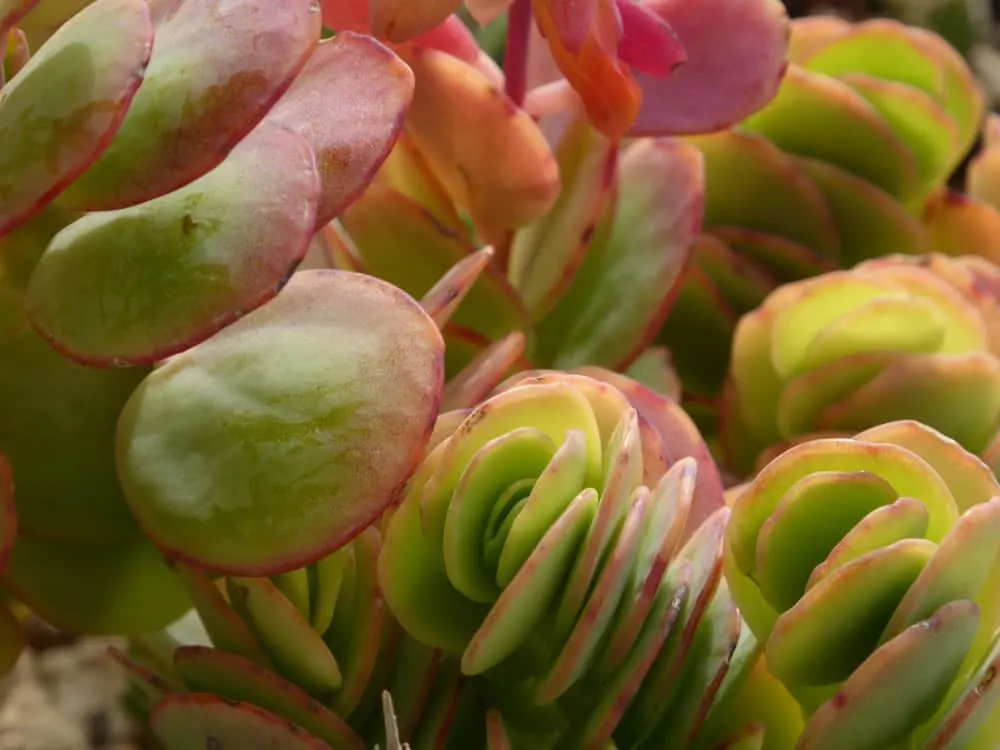
A stalkless succulent, paddle plant forms a tight cluster of large fleshy leaves from a central rosette.
Growing to a length of 6 inches, each leaf overlaps slightly with neighboring leaves, like a stack of pancakes, which explains its other common name: flapjacks.
Leaves are grey green in color, but the margins turn a flashy red when exposed to full sun.
Although paddle plant will fully mature after 3 to 4 years and bear fragrant yellow flowers, it dies off after it blooms. Not to worry though, the mother plant will produce plenty of offsets so you can start the process anew.
To keep paddle plant happy, plant in a cactus mix in a spot that receives plenty of sunlight.
Buy Paddle Plant here.
11. Black Coral Taro (Colocasia esculenta ‘Black Coral’)
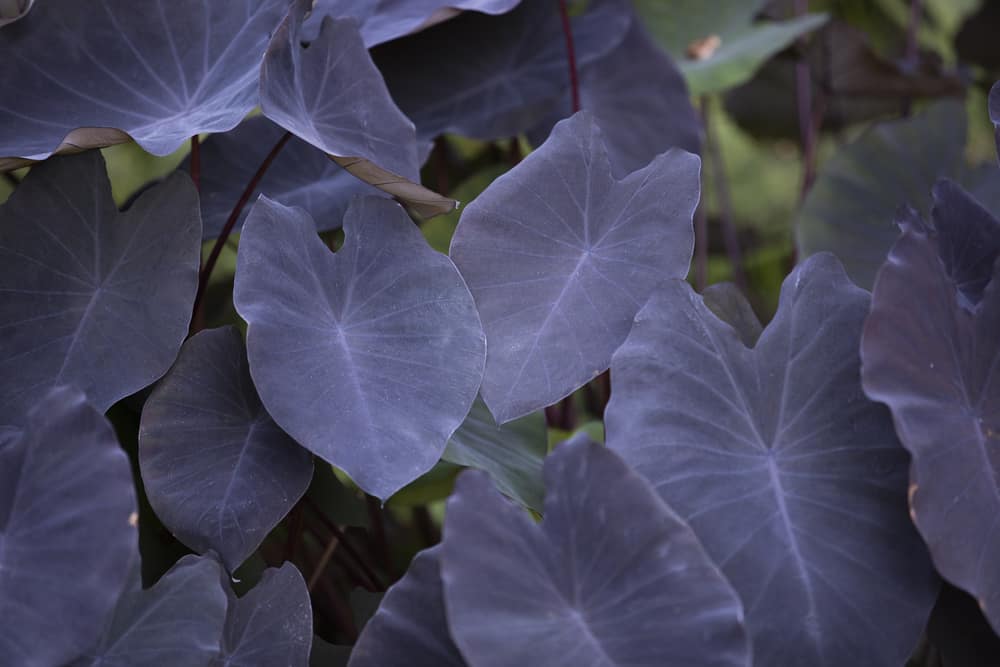
The ornamental plant with edible tubers, black coral taro features enormous 2 foot long heart shaped, jet black leaves.
It can reach a height and spread of up to 6 feet, so plant this one in a large container.
Caring for this elephant eared plant isn’t too difficult, provided you give it filtered sunlight or part shade and soil enriched with compost.
Because it is native to tropical areas of East Asia, it loves the water and can handle wet feet.
Buy Black Coral Taro here.
12. Rat Tail Cactus (Aporocactus flagelliformis)
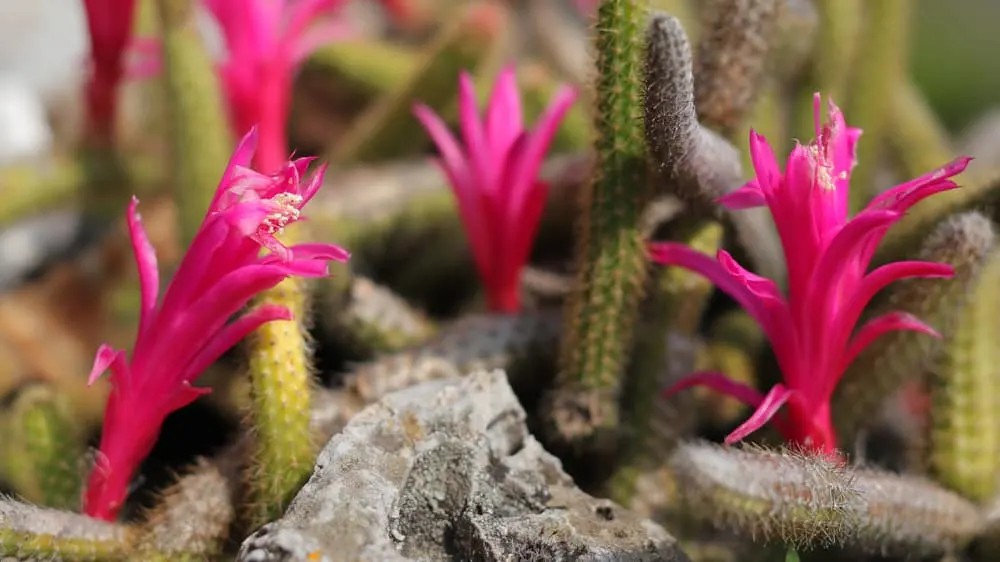
Rat tail cactus comes from the deserts of Mexico and Central America, found trailing over rocks and up trees.
Its flexible growth habit makes it ideal for hanging baskets – just be careful where you hang it since each dangling stem is covered in short, but prickly, spines.
In spring, rat tail cactus blooms aplenty with tubular pink flowers, each about two inches long.
The flowering period will last around 2 months, with each bloom persisting for a few days at a time.
Adapted to hot and arid environments, rat tail cactus will do best in full sun.
Water less in winter, more in spring and summer when it is actively growing.
Buy Rat Tail Cactus here.
13. Cape Sundew (Drosera capensis)
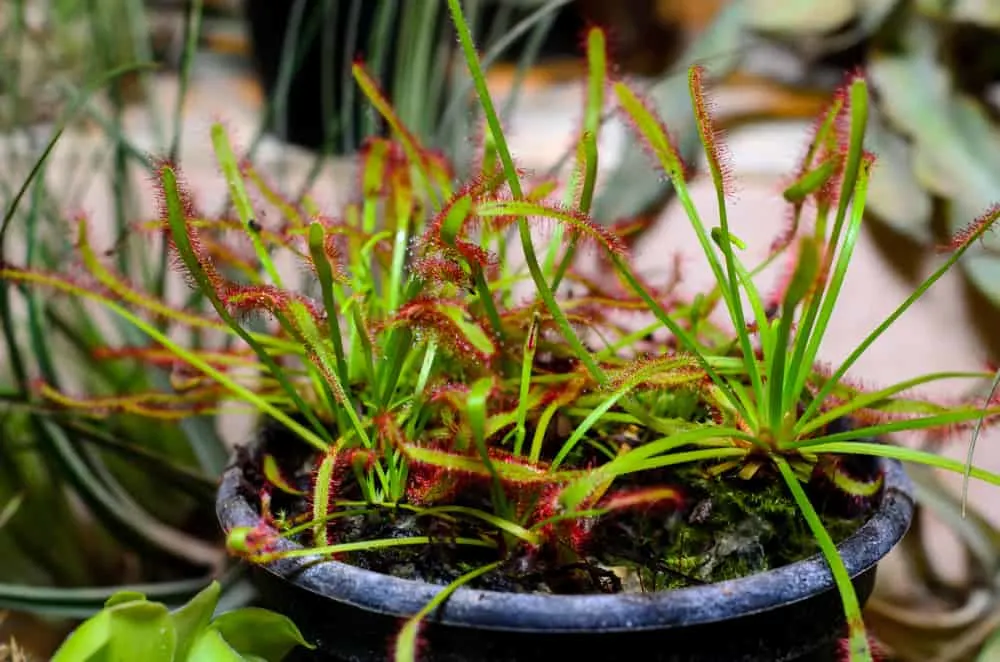
An otherworldly specimen, cape sundew is another carnivorous plant that will help keep your home clear of fruit flies and other indoor pests.
Cape sundew form small rosettes of tentacle-like leaves dotted with glistening, gland-tipped plant hairs that exude a substance irresistible to its prey.
Once an insect is lured to its leaves, cape sundew tightly curls around the bug, slowly digesting it for nutrients.
See the amazing and / or horrifying process here.
Like other carnivorous plants, cape sundew requires sandy, nutrient-poor soil. It likes plenty of bright, indirect light and lots of humidity.
Keep the soil consistently moist. Be sure to supplement their diets with a source of protein during the insect-scarce winter months.
Buy Cape Sundew here.
14. Xerographica (Tillandsia xerographica)
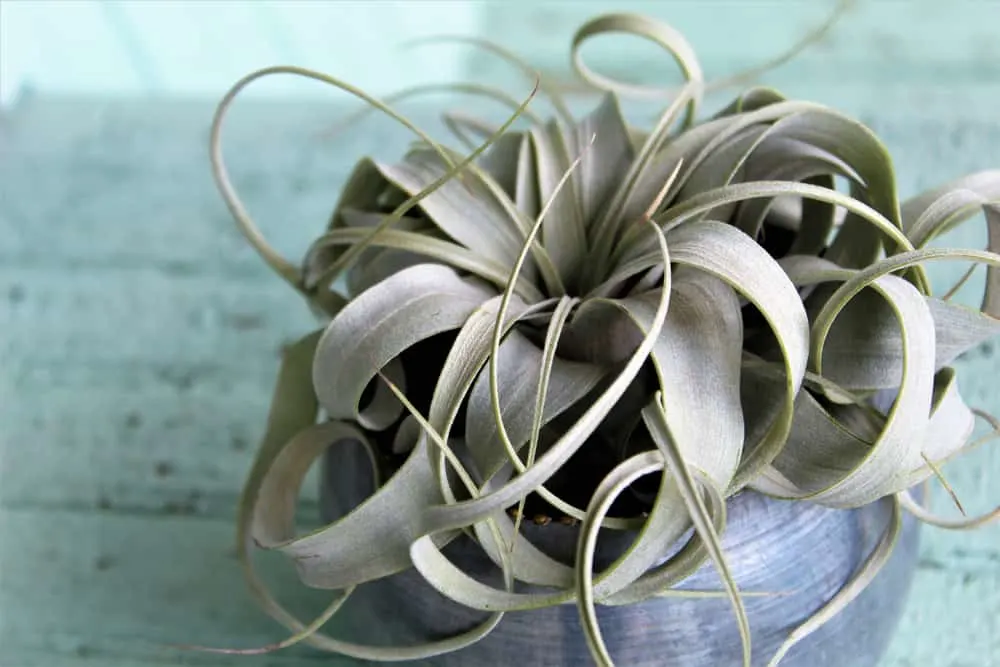
As one of the rarer air plants, xerographica has a ghostly appearance with silvery, very light green leaves that emerge from a rosette that curls back into itself.
Although it is a very slow grower, it can reach a width of 3 feet.
Xerographica is also incredibly hardy, needing only bright filtered light. Place it in a glass bowl or perched on a piece of decorative driftwood.
In naturally humid homes, xerographic needs only an occasional misting with water.
Otherwise, submerge the entire plant in plain water once per week; shake off the excess water and place it upside down so that the water drips out from the central rosette.
Buy Tillandsia Xerographica here.
15. Pencil Cactus (Euphorbia tirucalli)
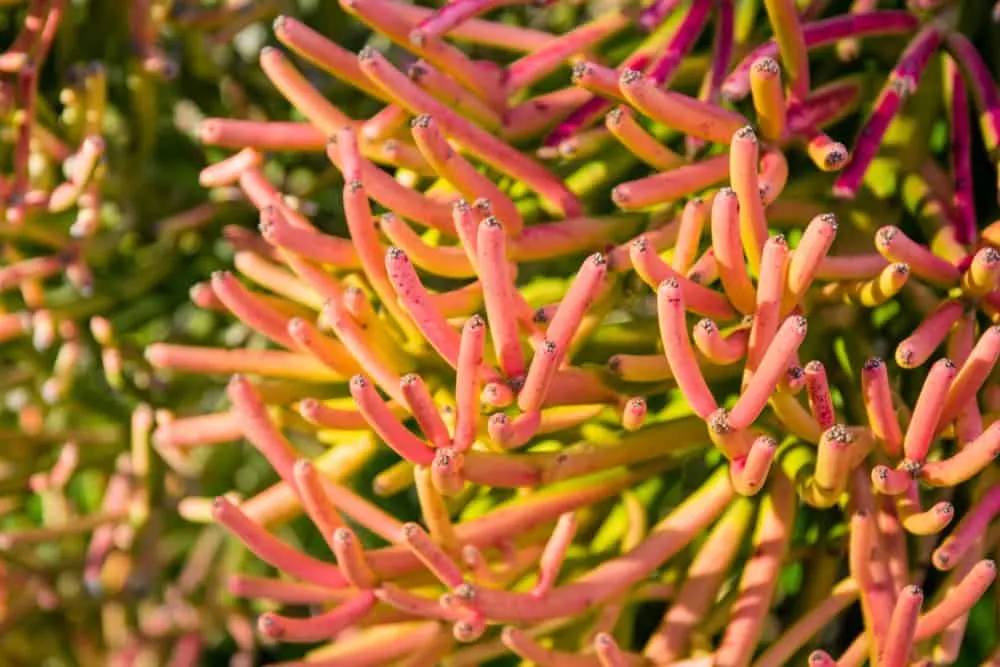
Also known as ‘sticks on fire’, pencil cactus produces clusters of long and slender branched stems tipped in a pinkish red.
Native to the semi arid tropics of India and Africa, pencil cactus is actually a tree that can reach heights of 23 feet tall. Kept indoors in a large container, however, causes pencil cactus to remain relatively pint sized at 6 feet in height.
Pencil cactus loves full sun and needs water only every couple weeks in summer.
Though it can be propagated by cuttings, extra care should be taken when handling pencil cactus.
Its fleshy stems contain a milky latex substance that is highly irritating to the skin.
Always wear protective gloves and thoroughly wash your hands after working with pencil cactus.
Buy Pencil Cactus here.
How to Grow a Beautiful Coffee Plant Indoors
Pin This To Save For Later
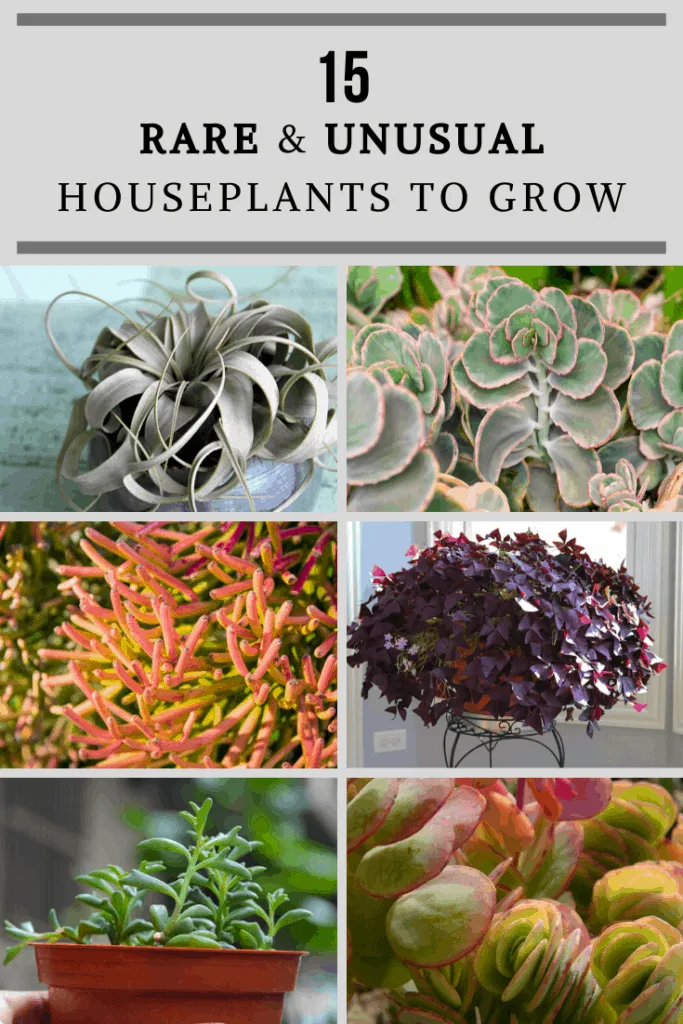

Get the famous Rural Sprout newsletter delivered to your inbox.
Including Sunday musings from our editor, Tracey, as well as “What’s Up Wednesday” our roundup of what’s in season and new article updates and alerts.


